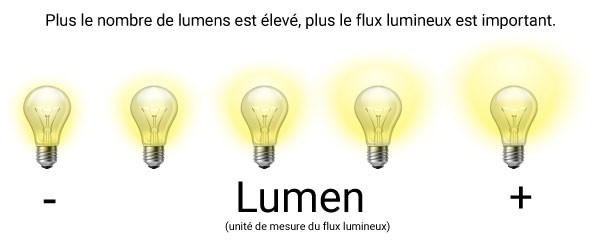The lumen is the unit of measurement for the amount of visible light emitted by a source. In other words, it indicates the actual brightness of the bulb. The higher the number of lumens, the brighter the bulb shines.
Unlike old incandescent bulbs, where we relied on wattage, LEDs consume much less energy to produce the same amount of light. Thus, the watt no longer indicates luminous power, but energy consumption.

How Many Lumens for What Use?
Here are some guidelines to help you:
250 to 500 lumens: ambient lamps, night lights.
500 to 800 lumens: supplementary lighting for a bedroom or a corridor.
800 to 1,200 lumens: main lighting for a living space such as a lounge.
1,200 to 1,600 lumens: kitchen, office, or areas requiring high brightness.
The Luminous Efficacy: Lumens per Watt
Another criterion to consider is the energy efficiency of the bulb, expressed in lumens per watt (lm/W). The higher this figure, the more efficient the bulb is. For example, a 10 W LED bulb producing 1,000 lm has an efficiency of 100 lm/W, which is excellent.
Conclusion
To choose your LED bulb wisely, no longer rely on watts, but on lumens. By considering the desired brightness, energy efficiency, and colour temperature, you will optimise your visual comfort while saving energy.